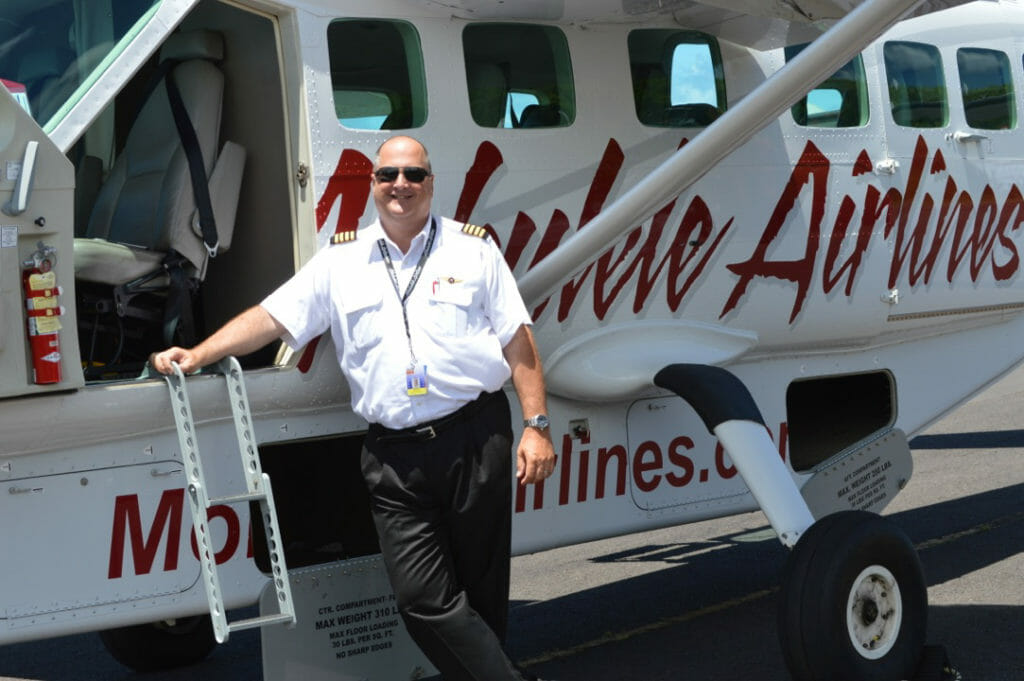
Mokulele Airlines is a Part 135 Scheduled Air Carrier serving markets in Hawaii and California with a fleet of fifteen Cessna Grand Caravans. The airline operates an average of 110 scheduled flights per day – over 40,000 segments a year – in Hawaii with ten C208Bs, placing Hawaii’s #1 Island Hopper
second only to Hawaiian Airlines in inter-island operations. Mokulele also offers its clients charter flights, and in late 2017 began operating air tours of the Big Island and the splendorous sea cliffs of Molokai. In mid-December, Mokulele added two PC-12NG aircraft to its Operating Certificate, providing first-class service between Honolulu and Lanai for guests of the Four Seasons resorts. During 2017, the carrier transported nearly 300,000 passengers.
Moving that many people on that many flights means that all of the company’s ten Hawaii-based Grand Caravans must operate efficiently, reliably, and safely. Each aircraft will fly fourteen legs and eight or more hours of flight time per day, which makes, in terms of utilization, Mokulele Airlines the #1 operator in the world of the C208B. All those numbers are impressive, but it’s the family (‘ohana in Hawaiian) of over 250 employees which puts the breath and heartbeat into making Mokulele the Best Little Airline in the World.
The company’s Core Values are identified with the high-flying acronym, I SOAR: Integrity, Safety, Ohana, Aloha, and Reliability; although, when polled, employees placed SAFETY in the top position. Interview hint: These core values would be good to know, if asked.
Over 100 pilots fill the two crew seats in the Caravans. Yes, two pilots operate the company’s aircraft on every revenue flight, which not only enhances safety, but also provides new commercial pilots with an opportunity to build time and gain experience in an airline setting. Mokulele also gains a queue of qualified and experienced potential PICs, because every FO hired by the airline is considered a Captain in training.
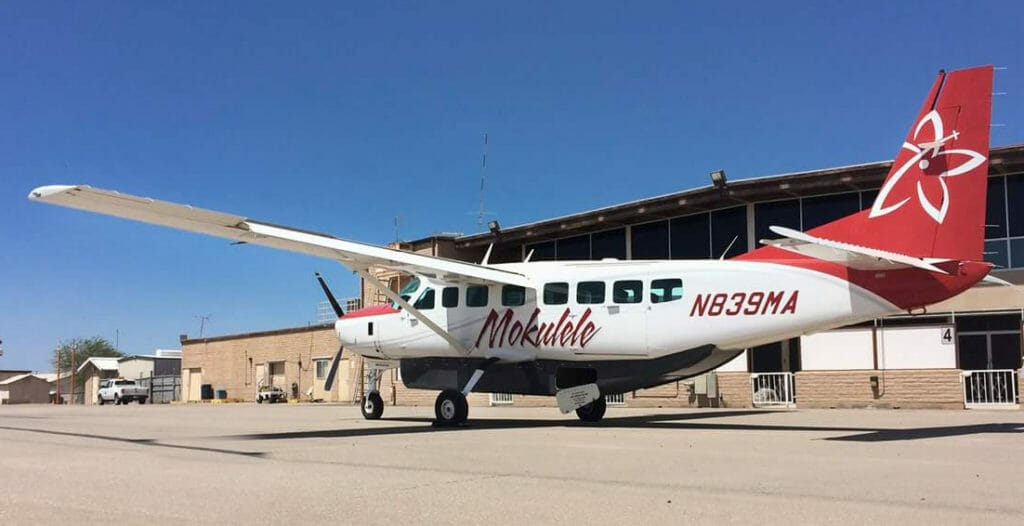 Pilot bases are located in Honolulu (PHNL), Kahului (PHOG), Kona (PHKO), Waimea (PHMU), and Los Angeles (KLAX).
Pilot bases are located in Honolulu (PHNL), Kahului (PHOG), Kona (PHKO), Waimea (PHMU), and Los Angeles (KLAX).
When legislators and regulators overreacted to the 2009 Colgan flight 3407 accident by creating what Air Facts Journal referred to as “the all-time most egregious case of smoke and flames rule-making”, they firmly wedged a generation of aspiring airline pilots – and the airlines hoping to offer those pilots careers crewing their aircraft – between the proverbial rock and a hard place. By eschewing the decades of natural supply and demand hiring protocols, ground-bound bureaucrats forced Part 121 carriers into an artificial marketplace by requiring each pilot come on board with an Airline Transport Pilot rating. This meant new 250 hour Commercial pilots had a long climb ahead and, sadly, increasingly limited opportunities to build their time to the 1,200 (Restricted) or 1,500 hour ATP minimums.
Mokulele Airlines provides these fledgling pilots with the opportunity to not only build that time while getting paid, but prepares them as true airline professionals. Competition for a crew position at Mokulele is intense as the airline has gained a strong reputation within the pilot community, resulting in the company currently having over 1,000 applications in its system. Oftentimes, the most successful route to being noticed comes through an internal recommendation. On the back end, the regional airlines, which are usually the next step in their career ladder, have come to know Mokulele’s pilots as some of the best trained and well-prepared crew members for their operations.
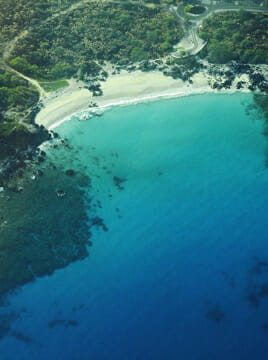 Ron Hansen, the owner of Mokulele since late-2011, came from a 121 pilot background with Braniff Airlines (the Braniff of multi-colored fleet fame). The airline’s Director of Safety, Manager of Training, and several of its pilots also have 121 pedigrees. Ron foresaw an opportunity for Mokulele placing two pilots in the single-pilot C208B and was determined to set the airline apart from other commuter airlines through an increased level of safety by instituting a supplementary First Officer program shortly after he took control; mandating the policy of two pilots on every revenue flight less than two years later. When the supplement became edict, Ron also determined the 135 carrier would be operated ‘as close to 121 standards as possible’.
Ron Hansen, the owner of Mokulele since late-2011, came from a 121 pilot background with Braniff Airlines (the Braniff of multi-colored fleet fame). The airline’s Director of Safety, Manager of Training, and several of its pilots also have 121 pedigrees. Ron foresaw an opportunity for Mokulele placing two pilots in the single-pilot C208B and was determined to set the airline apart from other commuter airlines through an increased level of safety by instituting a supplementary First Officer program shortly after he took control; mandating the policy of two pilots on every revenue flight less than two years later. When the supplement became edict, Ron also determined the 135 carrier would be operated ‘as close to 121 standards as possible’.
Moving the airline to that higher level of safety not only meant restructuring how its aircraft were operated, but also required convincing pilots used to flying the aircraft in essentially single-pilot fashion to buy in to the full-time, two-pilot crew mindset. Manuals – including the introduction of a formalized Flight Standards Manual – were written, or rewritten, principles adopted for PF and PM roles, checklists redesigned, and training moved from an ad hoc presentation to a formal, five-day ground school followed by G1000 training, flight training in the aircraft, and in mid-2016, the addition of a Redbird motion-enabled, G1000 outfitted, C208B simulator (formally a PTD) for use by both new hires and upgrades. Mokulele also opened its Kahului, Maui Training Center concurrent with the arrival of the Redbird. The Maui simulator, and counterparts on the mainland, have also become integral during the interview process to assess a candidate’s instrument and flight proficiency.
So, who thinks flying for a scheduled airline around the State of Hawaii sounds like something they’d like to do? Okay, you can all put your hands down.
Now that we’ve gauged your interest, here’s how you go about getting noticed by Mokulele’s recruitment staff to launch your career.
As previously noted, the competition is intense, even though the airline will need to replace up to 50% of its pilot ranks in any given year as those aimed at flying jets for the regionals leave to take the next step to their dream.
First, do a little research; learn all you can about the airline and its operations. Mokulele’s Core Values are more than just words management put up on a whiteboard one day, they are how we pursue our careers here.
If you think you might be able to contribute, fill out an application at our online site, www.mokuleleairlines.com. Then, search your friends, and friends of your friends, to attempt to find someone with a connection at the airline. That should be increasingly easy within the pilot community as there are now hundreds of former Mokulele alumni scattered at all the regional airlines and even some of the national and major carriers.
If selected as a candidate, our process normally begins with a short phone conversation with our Chief Pilot, Training Manager, or one of our senior line Captains. We’ll be getting a feel for not only where you’ve been, what you know, and where you’d like to go as a pilot, but who you are as a person. You’ll do best if you already know who we are as a company; and remember, we’re looking for bright, energetic, outgoing, personable, TEAM players.
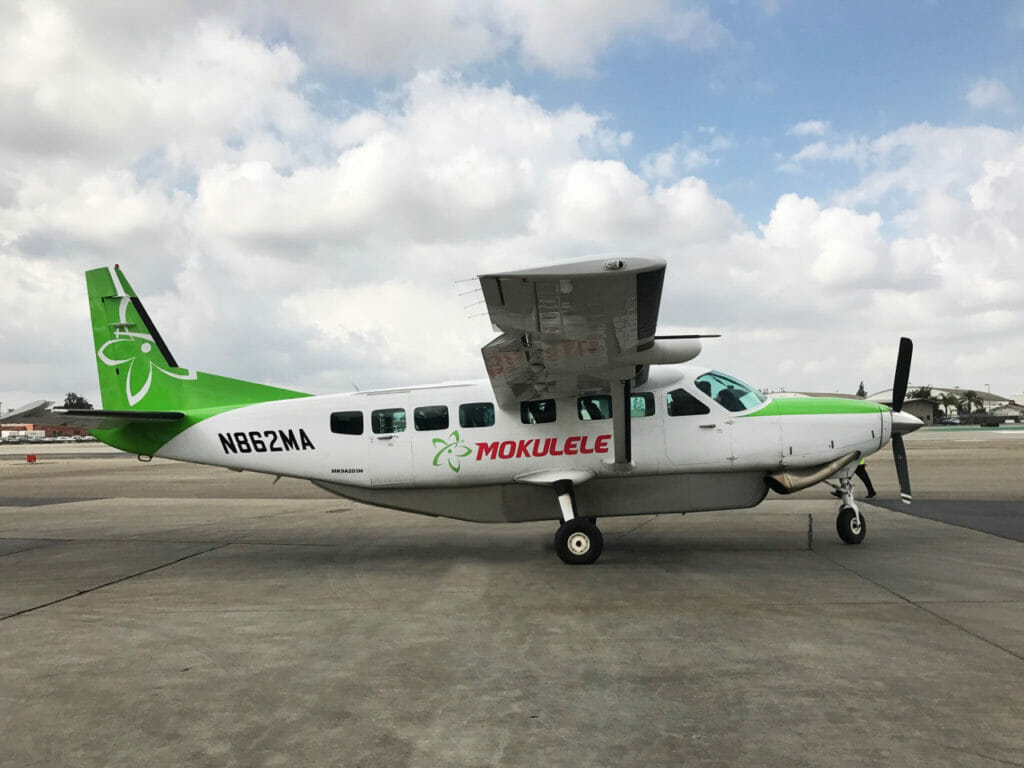
A formal interview, preferably in person either at our Training Center in Hawaii or at a location in the western United States, will be offered to those passing the first step of the process. You will be required to bring your documents, i.e. license, medical, logbook(s), passport, resume, etc., for review, and we’ll spend more time getting to know you. The process will last approximately two to three hours, including an in-depth general subject exploration, some of those infamous ‘What would you do IF…’ questions, and a short session in the simulator focusing on your aircraft handling abilities, instrument proficiency, and IFR familiarity. You’ll also get a chance to ask any questions you may have regarding the job, the company, the remainder of the pre-hire process, and the training to come should you be offered a position.
Most likely within a week or two, if you’ve passed muster to that point, you’ll hear from us through a formal offer letter which will describe the class schedule and other details. Prompt return of the signed offer letter will save your slot in the class and begin the process of assembling the required paperwork, much of which MUST be completed and approved PRIOR to the start of any on-site training.
Approximately two weeks before class begins, you’ll be provided a link to online training modules which will require 60 to 80 hours to complete. All modules must be completed prior to the first day of ground school.
Ground school is held at our Training Center in Kahului on the island of Maui and lasts five days, during which you will be provided motel accommodations and local transportation to and from those two locations.
Basic indoctrination begins with administrative functions such as copying documents and getting that all-important photo for your company ID badge. Most pilot candidates will receive their preliminary base assignments at the beginning of ground school. Human Resources does the mandated drug and alcohol training and provides an overview of the HR functions; then you’ll dive into the technical aspects of being an airline pilot. We realize this will be the first flying job for most of our new hires, and much of what you learn about the rules and regulations and how we must do things to stay in FAA compliance will be new and unfamiliar territory. The classroom time will be intense, and the studying required will fill your nights. The good news is once you understand the subject matter, it will be very similar wherever you go after Mokulele: Operations Specifications (OpsSpecs), General Operations Manual (GOM), Minimum Equipment List (MEL), Non-Essential Equipment and Furnishings (NEF), Training Manual, and the Flight Standards Manual (FSM), and all the paperwork and company forms which associate to them all.
You’ll have a portion of a day at the airport, attend class and be badged for the Airport Operations Area (AOA), then actually get close to a Grand Caravan for a general familiarization and your first instruction on the components of the aircraft and how to preflight it.
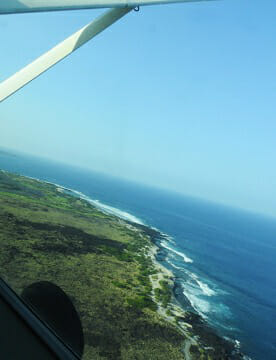
The Pilot’s Operating Handbook (POH) will be a familiar document to every pilot, though the workings of a turbine engine and the rudimentary systems of the C208B may not be, and generally this systems training will take up almost two days of class time.
After each of the first four days, you’ll take an online quiz, and after ground school is finished, a final exam. Eighty percent is passing and required on each test.
The Flight Standards Manual presentation, or how and why we operate the aircraft day-in and day-out comes on the fifth day of class. The FSM is a hefty document of over 500 pages (including the appendices), so some pre-studying is recommended.
Bookwork is all well and good, but by this time you’ll be anxious to get your hands on an airplane. Well, not so fast. There’s more training, but fortunately it’s actually spinning knobs and turning wheels on our G1000 and Redbird C208B simulators. New hires will receive one to two days of G1000 tabletop training. If you’re like I was, and your first question will be ‘What’s a G1000?’, I’d suggest you do some pre-studying on the equipment. There are a number of online videos which you will receive with the pre-class training modules, but do yourself a favor and do some independent studying on the system if you haven’t had any experience with the Garmin FMS equipment or you’ll quickly find yourself overwhelmed and falling behind in the next phase of training.
Ok, so now you can load a flight plan, tune radios, and watch the airplane fly an approach and a missed approach on the G1000 desktop. Time to fly something, right? Well, almost.
Simulator work in the Redbird will be provided to about eight hours as the Pilot Flying. You’ll work as a crew in four-hour sessions, spending half the time in the role of Pilot Flying (PF) and half as Pilot Monitoring (PM). Knowing the profiles, checklists, call outs, and understanding Crew Resource Management (CRM) before you get into the sim is imperative. When you’ve done all your nightly study and quiz, doing some chair flying with a partner will really help you get a jump on this portion of the training. Since we do things just like the pilots flying the big iron, this primary training in the two-crew process will be a fantastic asset to the rest of your career.
Once you’ve proven your stuff in the Redbird, you’ll be assigned to a Training Captain and advanced to flight training in the Grand Caravan. You’ll receive up to eight hours of flight time, with phase checking going on the entire time. You’ve got to show improvement each flight for training to progress from phase to phase. In addition, you’ll spend just as much time on the ground, reviewing what you’ve learned and being quizzed by your instructor in preparation for the upcoming check ride.
Check rides are given by one of our Check Airmen and generally last a total of about 4-5 hours which includes an oral examination of 2-3 hours and then 2 hours or so in the aircraft. You’ll be required to exhibit your knowledge and skill at the level of a professional airline pilot. Check Airmen are employees of Mokulele, but representatives of the FAA when performing these duties, and thus must detach themselves from their company perspective. The check ride is every bit as serious as any you’ve taken with a Designated Examiner.
Not everyone gets through the training. It’s a rigorous curriculum with a plethora of new and complex learning. There is a washout rate, but your instructors are not there to watch you fail. Every Training Captain is tasked and oriented to assist your learning, to get you the information you need, but YOU will be expected to do the work. From the first day in the classroom, you’ll be treated as part of the team, as a professional, as an airline pilot; we expect dedication to maintain that perspective from you.
If you make it through training and the check ride, you will get the chance to take a breath and enjoy the accomplishment, but only a short breath. Your last phase of training is Initial Operating Experience (IOE). Required by the FAA of 135 Captains, Mokulele has determined IOE to be beneficial to First Officers as well. You’ll have FO IOE in your 121 jobs anyway, and this phase of training will introduce you to line flying, working with a senior Captain trained for the process which generally takes two or more days. You’ll be transporting passengers on scheduled flights while learning the fine points and routine of the job of First Officer, the locale and local procedures, how to pronounce the Hawaiian names of reporting points, and which doors to go in and which doors not to go in at our stations.
After all that, you’re now a real airline pilot with a great not-so-little airline.
You’ll experience the beauty of flying in one of the most spectacularly scenic areas of the world. You’ll work as part of a crew in the air and a team on the ground. You’ll see sights you’ll never see the same way twice, because every time you witness a sunrise or sunset over the ocean, or pass along the highest sea cliffs in the world on Molokai, or glimpse a whale breaching or lingering on the surface below, or view the changing light playing off the craggy green and brown and black terrain of the islands, you’ll be forming a picture book of memories which will last a lifetime.
You’ll be challenged as a professional pilot, held to a higher standard than you’ve ever been held to before by both your fellow pilots and yourself. You’ll see your level of skill and knowledge expand every day, experience all types of Captains along the way, and learn how to be a good Captain when you get the chance. When you’re ready, in your eyes and in the eyes of your fellow pilots and flight management, you’ll be offered the chance to upgrade to the left seat, and the training begins anew. This time, however, the focus will be expanded. You’re going to have to display a command presence and good decision making skills which you should have developed during your time in the right seat. Being an FO at Mokulele means constantly challenging and improving yourself as a pilot. It’s a growth process that you will be responsible to undergo under the tutelage of experienced Captains.
When you move over to the left seat, and first look back at the faces of nine people who will be looking to you as the Captain, you’ll realize the weight of your responsibilities is far more than the minuscule addition of that fourth stripe on each of your shoulders. You’ll have an FO to your right, most likely looking as green as you once were, but nobody to your left, at least not on the airplane. On the aircraft, you’re it. But, you’ll have the support of a team of strong, experienced, and dedicated managers to back you up.
It’s what we are at Mokulele. We’re a team, and you can perhaps be part of it.
If you are hired at Mokulele and make it through training, you will be offered not just a job, but also a valued place in our ‘ohana; you will become a member of a family, and you will be welcomed into our midst for the rest of your life. Wherever you go in your career beyond our cockpits, your experience here with us will most likely be remembered as the best flying job you ever had.
In addition, Mokulele Airlines has possibly the best jumpseat privileges of any 135 carrier, a progressive pay policy, liberal PTO allowances, interline travel benefits, and all the perks and benefits of any larger airline.
It’s a great place to be.
Mokulele no ka oi.

























































































































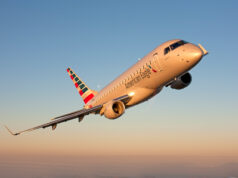
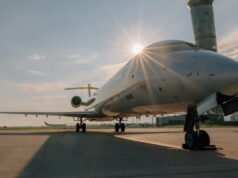



Congratulations.
Well explained article about Mokulele and an inspiring place to land your first flying. Glad and sad to hear there are over 1000 applicants in your database so will have to look for a referral or improve my resume. Definetely my choice of a 135 operation.
Regards.
Wilson Edgar.
Thoroughly enjoyed the information on Mokulele Air Team News. The best selling point for pilot recruitment would be just a Maui sunset! But at 1000 applicants to choose from leaves one flat footed.
Again, the information portrayed should be required reading for all inspiring pilots applying for Mokulele Ohana Crew Teams. I hope I can contribute to be a part of Mokulele SOARing best!